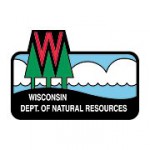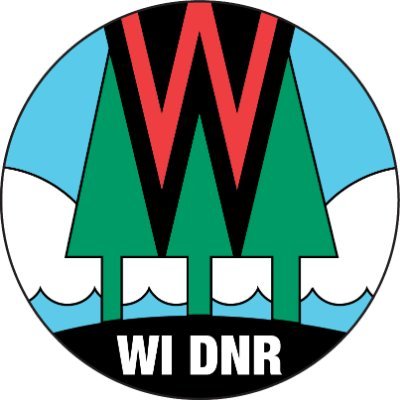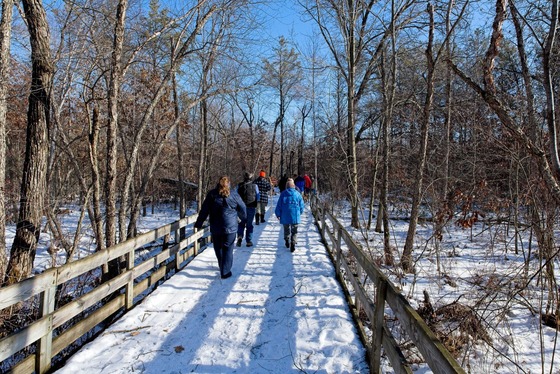Wisconsin PFAS Action Council Releases PFAS Action Plan
MADISON, Wis. – The Wisconsin Department of Natural Resources today announced the release of a statewide PFAS Action Plan created to address growing public health and environmental concerns regarding PFAS (per- and polyfluoroalkyl substances) in Wisconsin.
The PFAS Action Plan was developed by the Wisconsin PFAS Action Council (WisPAC), a group of nearly 20 state agencies and the University of Wisconsin System. As part of the statewide initiative to ensure Wisconsinites have access to clean, safe drinking water, Gov. Tony Evers signed Executive Order #40 in August 2019 to address the issue of PFAS across the state.
Executive Order #40 also directed the DNR to lead a group of state agencies to build an action plan to serve as a blueprint for how Wisconsin can address the use of and contamination from these forever chemicals.
PFAS are a group of human-made chemicals used for decades in numerous products including non-stick cookware, fast food wrappers, stain-resistant sprays and certain types of firefighting foam. These contaminants have made their way into the environment through spills of PFAS-containing materials, discharges of PFAS-containing wastewater to treatment plants and certain types of firefighting foams.
PFAS do not break down in the environment and have been discovered at concentrations of concern in groundwater, surface water and drinking water. They are also known to bioaccumulate in fish and wildlife tissues and accumulate in the human body, posing several risks to human health. At present, Wisconsin monitors nearly 50 sites across the state for PFAS contamination.
“A number of PFAS compounds are known to pose a risk to human health,” said Mark Werner, director of the Bureau of Environmental and Occupational Health at the Department of Health Services. “We are proud to partner with the other WisPAC agencies in taking concrete steps toward reducing PFAS exposure in our communities and protecting the people of Wisconsin.”
The PFAS Action Plan was designed as a blueprint to guide the state in its efforts to address PFAS contamination. The plan includes priority action items identified through input from state agencies, a citizen and a local government advisory group, and the public. Each item contains an overview of what would be required to bring it to fruition, including budgetary, legislative and staffing needs. Action items are categorized into eight themes: standard setting, sampling, pollution prevention, education and communication, research and knowledge, phase-out, future investments and historic discharges.
“PFAS contamination puts people’s health at risk. We must effectively address this hazard. The issuance of the PFAS Action Plan is a significant step as we continue working to provide stronger protection for Wisconsinites against forever chemicals,” said Attorney General Josh Kaul.
In total, there are 25 action items laid out in the plan. Some highlights include recommendations to:
- Establish science-based PFAS standards for environmental media such as soil, groundwater and biosolids.
- Develop PFAS risk communication infrastructure including the construction of a website, improved public engagement, partnerships within the community and inter-agency collaboration.
- Streamline processes associated with the delivery of safe drinking water supplies to communities impacted by PFAS contamination.
- Support veterans, their families and those who live near military sites who may have a higher risk of exposure to PFAS.
The council first convened in January 2020, and met a total of seven times, adapting from an in-person to a virtual format in June due to restrictions related to COVID-19. Interspersed were two advisory group meetings and three public listening sessions through which the public and local government representatives were able to offer recommendations.
“PFAS contamination is of particular concern to Wisconsin’s veterans, whose risk of long-term PFAS exposure may be heightened due to their time in the military,” said Department of Veteran Affairs Secretary Mary Kolar. “Going forward, we are committed to ensure that Wisconsin takes the measures necessary to protect and support our veterans from PFAS.”
WisPAC is grateful for the active participation and crucial input received from individuals, organizations, businesses, and others throughout 2020. The council sought to foster transparency by keeping all meetings open and accessible to the public, and by soliciting input in writing, through an on-line survey and at meetings. Going forward, the council means to continue providing an avenue for dialogue between the state and local governments, businesses and communities on the issue of PFAS in Wisconsin.
“The Action Plan is a great step forward. GLIFWC member tribes are disproportionately affected by PFAS through high rates of fish consumption. We are hopeful these issues will be directly addressed to further strengthen the plan,” said Sara Moses, Great Lakes Indian Fish and Wildlife Commission (GLIFWC) environmental biologist.
The DNR has stood at the helm of WisPAC’s mission to partner with Wisconsin’s local governments, businesses and communities in composing the PFAS Action Plan, which will serve as a roadmap for state agencies as Wisconsin moves forward in addressing PFAS contamination. To learn more about the work of the Wisconsin PFAS Action Council and read the complete action plan, please visit here.
NOTE: This press release was submitted to Urban Milwaukee and was not written by an Urban Milwaukee writer. While it is believed to be reliable, Urban Milwaukee does not guarantee its accuracy or completeness.
More about the PFAS Problem
- Bipartisan Push to Tell Counties Faster When Water Tests Fail - Henry Redman - Dec 19th, 2025
- MKE County: County Seeks to Sue PFAS Producers, Oil Companies - Graham Kilmer - Dec 10th, 2025
- Wisconsin Reviewing EPA-Approved Pesticides For PFAS - Danielle Kaeding - Dec 9th, 2025
- State Nears Settlement with Johnson Controls/Tyco Over PFAS Spills - Danielle Kaeding - Dec 4th, 2025
- Senate Bill Promotes Soybean-Based Firefighting Foam to Replace PFAS - Danielle Kaeding - Dec 2nd, 2025
- Test Results Show High PFAS Levels in Wisconsin’s Landfill Runoff - Danielle Kaeding - Dec 2nd, 2025
- Wisconsin Communities Get $282 Million for Drinking Water Projects - Danielle Kaeding - Nov 19th, 2025
- Gov. Evers, DNR Announce $282 Million to Improve Drinking Water Quality for Wisconsinites in 74 Municipalities - Gov. Tony Evers - Nov 18th, 2025
- Cleanup of PFAS Could Cost Wisconsin Billions - Danielle Kaeding - Nov 13th, 2025
- Cleanup PFAS Without Penalizing Innocent Landowners - Wisconsin Manufacturers & Commerce - Nov 4th, 2025
Read more about PFAS Problem here
Mentioned in This Press Release
Recent Press Releases by Wisconsin Department of Natural Resources
DNR Confirms CWD in Wild Deer in La Crosse County
Dec 22nd, 2025 by Wisconsin Department of Natural ResourcesBaiting And Feeding Ban Extended























